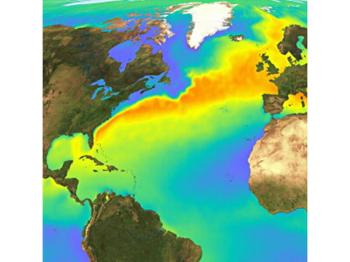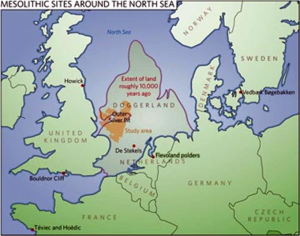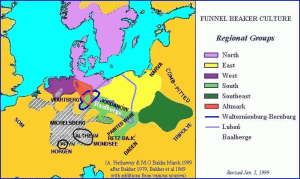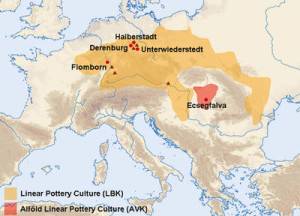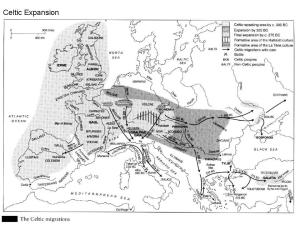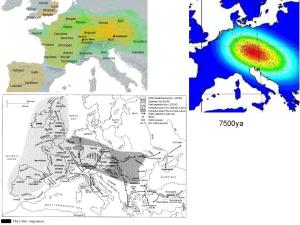Beneath the cold grey waves of the North Sea lies a lost landscape where vast herds of mammoth and bison roamed. This land was equal in size to modern Britain and contained hills and valleys, rivers and forests, marsh and moor. Sometimes warm and marshy and at other times a vast frozen tundra – now it is being systematically explored and already revealing evidence of early man. Was this Britain’s Atlantis?
http://www.megalithic.co.uk/article.php?sid=2146412048
http://archaeology.about.com/od/historyofagriculture/ss/hunting_farming.htm
In the period from c. 5000-4700 cal. BC, sites belonging to successive epi-Bandkeramik groups expanded westwards in three salient’s, following the loess plains: along the Somme through Picardy; into Normandy, reaching the Plain of Caen; and south-westwards across the Plain of Beauce into the middle Loire and towards the Gate of Poitou (Sherratt, p.152). The pottery of these groups began to deviate away from the typical Bandkeramik convention and its successors in the Rhineland: it carried comb-impressed ornament and had a distinguishing bone filler – characteristics which may possibly signify a local involvement to the tradition.http://www.bukisa.com/articles/144814_a-history-of-the-bandkeramik-culture
 (see also Architectural Continuity)
(see also Architectural Continuity)
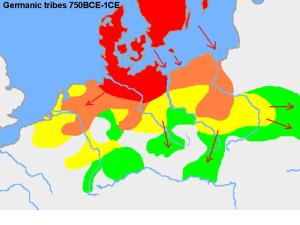 Germanic Expansion (~ 850 – 250 BC): From about 850 through about 250 BC, Germanic tribes take territory away from the Celts. The mainland Germanic peoples become a separate nation from those that remain in the Germanic homeland to the north (Scandinavia).http://www.worldology.com/Europe/classical_europe.htm
Germanic Expansion (~ 850 – 250 BC): From about 850 through about 250 BC, Germanic tribes take territory away from the Celts. The mainland Germanic peoples become a separate nation from those that remain in the Germanic homeland to the north (Scandinavia).http://www.worldology.com/Europe/classical_europe.htm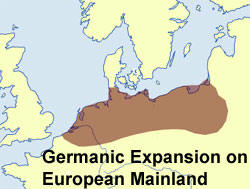

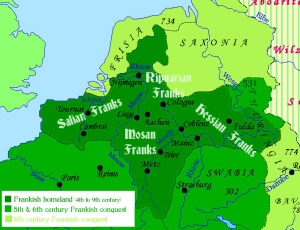 http://www.eupedia.com/europe/frankish_influence_modern_europe.shtml
http://www.eupedia.com/europe/frankish_influence_modern_europe.shtml
The Franks were a Germanic tribe that probably descended from Scandinavia to settle in the modern day Benelux and the German Rhineland, around the 2nd and 3rd century C.E. The Frankish influence over Europe was so important from the Merovingian period onwards that the term for “European” or “non-Muslim” became (up to this day) Faranji in Arabic and Farangi in Persian, a derivative of the word “Frank”. The term became used in the Indian subcontinent as well after the Muslim conquest. Firang or Farang are also used in South Asia – the latter in Thailand as well – to refer to Westerners.
In the way that Charlemagne, Emperor of Occident, became the symbol of the unified Christian Europe in the Muslim world, the Franks have become associated with the modern concept of Westerners. It could be said in a way that the Franks laid the foundations of Western society and culture.
On a side note, understanding history makes it only natural for the modern capital of Europe (Brussels) to be located in the very middle of the old Frankish homeland. In fact, Brussels was the historic capital of the Duchy of Brabant, which was the official heir of Lotharingia, the Kingdom of Charlemagne’s eldest grandson, who was supposed to rule over his undivided empire (his brothers did not see it this way).

